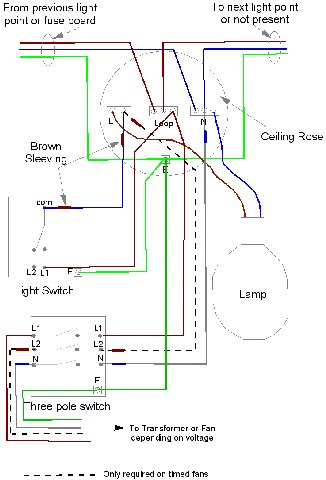There are various types of fans available for the domestic market. The following are a few basic examples:
- Manual
- Timed
- Humidistat
- Combination Timed/Humidistat
- Heat Recovery
The most common place to find an extractor fan at home will be the toilet and/or bathrooms are located. Your choice of fan will depend on:
- the size of room, (different fans will circulate the air more than others)
- whether the room has natural ventilation, (a window that can be opened or not)
- what is to be vented (smells, moisture)
- the voltage you wish to use (ELV, LV)
- where it is to be mounted, (ceiling, loft, wall, shower area)
- Index of protection for the location
Providing power for your fan is reasonably simple as in most cases it is taken from the light circuit. In all cases you will require a local means of isolation by pull cord or by some other means of switching. Local fused protection may be also required depending on the fan and the circuit it is connected to.
Extract Ventalation Rates
| Rooms containing openable windows (that is located on an external wall |
Extract ventilation rates
(litres/second) |
| Kitchen: |
|
| a) adjacent to a hob |
30
|
| b) elsewhere |
60
|
| Utility room |
30
|
| Bathroom (with or without WC) |
15
|
For kitchens, utility room, bathrooms and sanitary accommodation not containing openable windows (that is, internal rooms) requirements will be satisfied if there is either:
a) mechanical extract ventilation rated as in above table and the fan has a 15 minute overrun and is either controlled automatically or manually. in rooms with no natural light it would be appropriate for the fans to be controlled by the operation of the light switch; or
b) passive stack ventilation operated manually and or automatically by sensor or
c) an appropriate open-flued heating appliance.
For items (a) to (c) above, an aire inlet should be provided, for example, a 10mm gap under the door.
Manual Fans
The most basic fan there is either operated by say a light being switched on, integral switching device or a switch located locally just for the fan operation. No matter what means is used to operate the fan, a means of local isolation for servicing purposes should also be fitted.
Standard Timed Fans
Timed fans can be the most awkward to install as power is required from 2 locations, one from the point that switches the light on in the room the fan is to be fitted and a permanent supply as well. When installing local isolation for these you will need to fit a 3 pole switching device so that both sources are isolated. It is not enough to trust isolation by two different switches, e.g. the light switch and another switch installed just for the permanent supply.
PIR Timed Fans
The advantage of this fan over the standard timed fan is that it only requires power from one source. A means of local isolation for servicing purposes should also be fitted.
Humidistat Fans
These are operated by either an integral sensor or remote sensor which detects the humidity level in a room. The sensor is usually adjustable according to the requirements. Some makes provide an integral overide switch so that it operates like a manual fan. There should also be local isolation fitted for servicing.
Combination Timed/Humistat Fans
These should be connected to the power much like the timed fans. The operation of these fans is a combination of the timed and humistat fans. Local isolation should be the same as a timed fan.
Heat Recovery Fans
These are the most expensive, possibly in excess off £200, and instead of venting all the warmth of the room they should recover some of it hence saving money on heating. They come in Manual, Timed, humidistat or combination options. Connection to a power source and local isolation is much the same as in the above fans but exercise caution when deciding your source. These may require a power on their own circuit or consideration may need to be given to taking power from a circuit other than the lights depending on how much power they use.
Typical Extractor Fan Circuit (Old Colours)
(Click on picture to enlarge)
Typical Extractor Fan Circuit (New Colours)
(Click on picture to enlarge)


